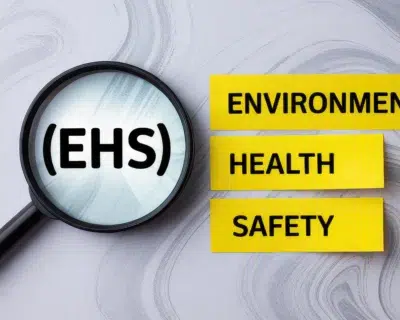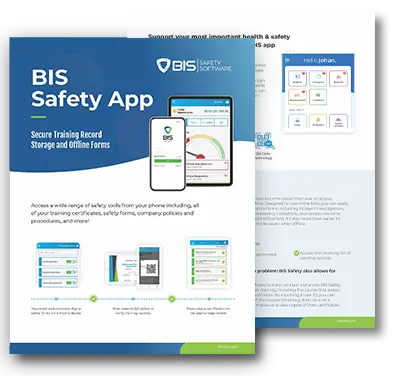
4 Benefits of Great Equipment Maintenance Software
Equipment is most likely one of the more expensive, but most valuable aspects of your organization. As the equipment is subject to tough mechanical wear and extreme temperatures, regular maintenance is required for it to stay operational. Under these demanding physical conditions, even top quality equipment will eventually fail without proper maintenance. Servicing large amounts of machinery can be a challenge, but the task is simplified when companies manage their maintenance programs with software.
The ideal frequency of equipment maintenance depends on the specific equipment and its application. Lack of maintenance increases the risk of a breakdown, which results in downtime and expensive repairs. However, excessive maintenance causes disruption and unnecessary costs, and some equipment can even be damaged. There must be a balance between the two extremes for effective maintenance/
Equipment management software offers many advantages for companies. Maintenance can be programmed and tracked more efficiently, keeping equipment in optimal condition. Safety software will simplify documentation and compliance since any important file can be accessed with a few clicks. Here are 4 benefits of great equipment maintenance software.
1) Tracks Equipment
Equipment maintenance software helps with more than planning and documentation. Operators can also access a safety system to check the exact location and condition of each piece of equipment. For example, they can check if a unit is operational, under maintenance, locked out, in transit, or permanently retired. Certain software can keep a profile of each piece of equipment which may include equipment pictures, serial numbers, manufacturer data, authorized operators, mileage, hours of use, and other key information. Approved personnel can update this information, based on inspections or general observations onsite.
Equipment maintenance software with tracking functions is very useful for large facilities and multi-site operations. Malfunctions and other issues are reported immediately, regardless of where the affected equipment is found. Accidents are prevented more easily, since operators can check the status of equipment before any task. With printed reports, workers are not informed immediately when an issue is found.
2) Keeps Companies Compliant
Due to the risks involved when operating equipment, maintenance is normally addressed by local regulations. These requirements are legally enforced, and they vary depending on the industry sector and equipment type. For example, OSHA Standard 1910.178 addresses many aspects of powered industrial trucks, including their maintenance requirements.
Safety software can be used to manage local regulations, and create a maintenance program that meets them. For example, digital inspection formats can be designed to collect all the information needed for compliance. The format can be programmed to only allow a submission when all the necessary information has been gathered.
3) Keeps Equipment Operating Efficiently

The main goal of preventive maintenance is solving issues before they cause an accident or breakdown. All equipment is subject to regular maintenance, even when working normally. Maintenance is typically planned based on time intervals or usage; for example, a truck may receive maintenance for every 5000 miles traveled, and at monthly intervals.
As the amount of equipment in a facility increases, maintenance plans become more complex. With only printed documents, managing maintenance can be nearly impossible for a large company. Equipment management software is very useful when you must keep track of maintenance for many types of machinery.
A robust safety system will send automatic reminders when equipment inspections are due. The corresponding reports can be uploaded in digital format, including media like photos and videos. A traditional written report only allows writing and sketches.
4) Merges All Information in One Place
In addition to servicing equipment, maintenance departments must manage all the related documents. These include operation manuals, manufacturer warranties, inspection formats, insurance policies, etc.
Physical documents occupy plenty of space and trying to find specific files is time-consuming. Digital documents can be located and accessed within seconds. Using printed documents is slow and tedious, and increases the chance for human error. There is also a hidden labor cost since this administrative time could be used more productively.
Safety software is very useful when managing documentation for many equipment types. For example, a manufacturing company may have cutting, excavating, and welding machines, and each one will have unique maintenance needs. In these cases, there may be an entire library of technical documents.
Printed documents can be damaged or lost very easily whereas digital documents can be stored safely in the cloud and accessed by many users. The mobile device being used to fill a document can be damaged, but the latest version of the document will still remain available.
Conclusion
Equipment maintenance software can help companies create safer workplaces, by ensuring that all equipment is serviced regularly. Maintenance management becomes more complex as the size of a company increases, but a safety system makes the job much simpler. Safety software can also be used to classify and access a variety of important maintenance documents. This is useful for compliance since the documents required by local regulations are managed more easily. Software can also be used to provide live information about equipment, and operators can check its location and condition. Implementing a software solution into your organization is extremely beneficial for managing and protecting your most valuable assets.




































